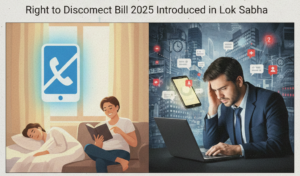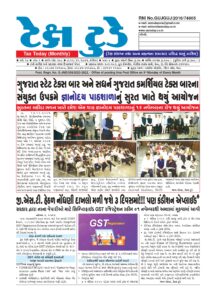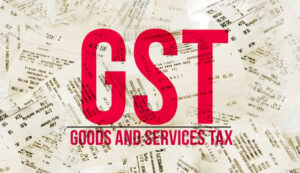GST WEEKLY UPDATE :29/2025-26 (19.10.2025) By CA Vipul Khandhar

-By CA Vipul Khandhar
- Advisory: GSTR-9 & 9C for FY 2024-25 Enabled:
Filing facilities for GSTR-9 (Annual Return) and GSTR-9C (Reconciliation Statement) for FY 2024-25 have been enabled on the GST Portal w.e.f. 12 October 2025. Please ensure that all monthly/quarterly GSTR-1 and GSTR-3B returns for FY 2024-25 are filed to activate the GSTR-9/9C tile on your dashboard.
A detailed FAQ (summarized below) has been released by GSTN to assist taxpayers with changes and new validations for FY 2024-25.
| No. | Query | Summary of GSTN Clarification |
| 1 | When will GSTR-9/9C be enabled? | After all due GSTR-1 and 3B returns for FY 2024-25 are filed. |
| 2 | Is GSTR-9 enabled if any GSTR-1/3B is pending? | ❌ No. It activates only after complete filing of both. |
| 3 | What is Table 8A? | Auto-populated from GSTR-2B; includes FY 2024-25 invoices (also April–Oct 2025 of next FY) and excludes previous-year records. |
| 4 | Does IMS action impact GSTR-9? | No direct impact; accepted documents in IMS appear via GSTR-2B. |
| 5 | Are GSTR-1A amendments considered? | ✅ Yes, from FY 2024-25 onward, GSTR-1A/IFF changes are included in Tables 4 & 5. |
| 6 | What is new Table 6A1? | Captures ITC of FY 2023-24 claimed in FY 2024-25 (except Rule 37/37A cases). Prevents earlier year mismatch in Table 6J. |
| 7 | ITC claimed–reversed–reclaimed within FY 2024-25 | Report: Claim → 6B, Reversal → 7A-H, Reclaim → 6H. |
| 8 | ITC of FY 2023-24 reclaimed in FY 2024-25 | Report in 6A1 (if other than Rule 37/37A) or 6H (if under Rule 37/37A). |
| 9 | ITC of FY 2024-25 reclaimed in FY 2025-26 | Report claim → 6B, reversal → 7A-H, reclaim → 13 (others) or 6H (if Rule 37/37A). |
| 10 | Table 6M label change | Only alignment with form instruction—no reporting change. |
| 11 | What is “Table 8A Excel”? | Downloadable file on GSTR-9 dashboard showing invoice-wise data for 8A. |
| 12 | Why mismatch between 8A (Excel) and 8A (Online)? | Possible due to RCM entries, PoS amendments, FY-shifted invoices, etc. |
| 13 | Supplier’s GSTR-1 amendments—impact on 8A? | Auto-updated if amendment pertains to FY 2024-25; examples included in FAQ. |
| 14 | FY 2024-25 invoices filed in Apr–Oct 2025 | Auto-populated in Table 8A once corresponding GSTR-3B filed. |
| 15 | Table 8C—what it covers | Only missed ITC of FY 2024-25 claimed first time in next FY till 30 Nov 2025. |
| 16 | ITC reversed & reclaimed next FY—include in 8C? | ❌ No, report only in Table 13; not in 8C to avoid 8D mismatch. |
| 17 | When to report in 8C | ITC of FY 2024-25 first availed in FY 2025-26 (before 30 Nov 2025). |
| 18 | 8B label change—6H delinked | 8B auto-populates only from 6B. Reclaimed ITC (6H) excluded to avoid 8D variance. |
| 19 | Import ITC claimed next FY | Report in new Table 8H1 (not 6E) + Table 13 for FY 2024-25. |
| 20 | Negative-liability effect on Table 9 | Only positive net tax liability from 3B auto-populates; field remains editable. |
| 21 | Label change in Tables 12 & 13 | Only terminology change; same logic—12 = ITC reversed next FY, 13 = ITC availed next FY. |
| 22 | HSN reporting (Table 17) | New downloadable Excel—auto-extract from GSTR-1/1A Table 12 for easy HSN compilation. |
| 23 | 65% concessional rate check box | Removed from online & offline tools (no longer applicable). |
| 24 | Late fee in GSTR-9C | Computed u/s 47(2) from due/filing date of GSTR-9 till 9C filing; auto-calculated in new Table 17 of GSTR-9C. |
| 25 | ITC reclaimed under Rule 37/37A – which FY? | Treated as ITC of the FY in which reclaimed and reported in Table 6H of that year. |
Practical Highlights
- Auto-population Enhancements: Table 6A1, 8H1, 8C, and Excel downloads simplify reconciliation.
- Reclaim Clarifications: Separate treatment for Rule 37/37A vs. other reasons.
- Late Fee Automation: System-driven computation under Section 47(2).
- No 65% Rate Checkbox: Form rationalized.
HSN Assistance: Download utility facilitates accurate Table 17 reporting.
- Advisory Update: New “Pending” Option for Credit Notes & ITC Reversal Declaration in IMS: Effective from October 2025 Tax Period: Date: October 17, 2025 Issued by: GSTN / CBIC Communication Cell:
The GST Network has introduced a major enhancement in the Invoice Management System (IMS), effective from the October 2025 tax period, providing additional flexibility to taxpayers for managing credit notes and related Input Tax Credit (ITC) reversals.
The new facility allows taxpayers to mark Credit Notes and related documents as “Pending” for one tax period, giving additional time to verify and reconcile vendor documents before final acceptance or rejection.
Additionally, IMS now enables taxpayers to declare the precise ITC reversal amount while accepting such documents, particularly useful in cases of partial or previously reversed credits.
These reforms aim to resolve frequent disputes between suppliers and recipients over mismatched credits and enhance accuracy in return filing.
Key Highlights of the New IMS Features
| Feature | Description |
| Pending Option Enabled | Taxpayers can now mark Credit Notes, CN Amendments, and certain Invoice/DN Amendments as “Pending” for one tax period. |
| Applicable Documents | – Credit Notes (CN) & upward amendments – Downward CN amendments (if original CN rejected) – Downward Invoice/DN amendments (if original accepted & 3B filed) – ECO-document downward amendments (if original accepted & 3B filed) |
| Implementation Date | Applicable prospectively from October 2025 tax period. |
| Duration of Pending Status | – Monthly filers: 1 month (until due date of next month’s 3B) – QRMP filers: 1 quarter (until due date of next quarter’s 3B) |
| Auto-Accept Rule | If no action (accept/reject) is taken by the end of the allowed period, the record will be deemed accepted by the system. |
| ITC Reversal Declaration | At the time of accepting a record, recipients will now see a prompt: |
| “Whether ITC needs to be reduced for the selected record(s)?” | |
| Reversal Options | – YES: Full or Partial reversal (taxpayer declares reversal amount). – NO: No ITC reduction (e.g., ITC not availed earlier). |
| Remarks Facility | Taxpayers can now add remarks when taking Reject or Pending actions (mandatory in case of partial or no reversal). |
| Impact on GSTR-2B & 3B | System computes ITC based on recipient’s declared reversal; reflects automatically in GSTR-2B and flows into GSTR-3B. |
Illustrative Example:
| Scenario | Example |
| Credit Note dated 15 Oct 2025 | Appears in IMS with the Pending Option (GSTR-1 filed on 11 Nov 2025). |
| Pending Period for Monthly Filer | Upto 20 Dec 2025 (GSTR-3B due date of next month). |
| Action Not Taken | System treats the CN as deemed accepted post expiry. |
| Partial ITC Reversal Case | Recipient selects “YES” and declares partial reversal amount; system adjusts only that value in GSTR-2B. |
🧩 Quick Summary Table – IMS Action Flow
| Action Type | Recipient’s ITC Impact | Supplier’s GSTR-3B Liability |
| Accept (Yes – Full reversal) | Full ITC reversed | No liability impact |
| Accept (Yes – Partial reversal) | Declared ITC reversed | No liability impact |
| Accept (No) | No ITC change | No liability impact |
| Reject | No ITC credit | Supplier’s liability increases (record reopens) |
| Pending | No ITC or liability impact till decision | No change until action taken |
| No action till expiry | Deemed accepted; ITC reversed per declaration | No further impact |
Business Impact
✅ Enables timely reconciliation and dispute resolution between buyer and seller.
✅ Prevents unnecessary ITC reversals for unveiled credits.
✅ Ensures system-calculated ITC accuracy in GSTR-2B & 3B.
✅ Enhances compliance flexibility for both monthly and QRMP taxpayers.
Conclusion:
This new “Pending” feature in IMS and declaration-based ITC reversal are welcome compliance reforms designed to simplify credit management and reduce reconciliation disputes. Taxpayers should actively monitor IMS dashboards post-October 2025 to make timely accept/reject decisions and avoid deemed acceptance of credit notes.
Disclaimer:
This publication contains information for general guidance only. It is not intended to address the circumstances of any particular individual or entity. Although the best of endeavour has been made to provide the provisions in a simpler and accurate form, there is no substitute to detailed research with regard to the specific situation of a particular individual or entity. We do not accept any responsibility for loss incurred by any person for acting or refraining to act as a result of any matter in this publication.
(The author is a well known Chartered Accountant practising on Direct and Indirect Taxes at Ahmedabad)





